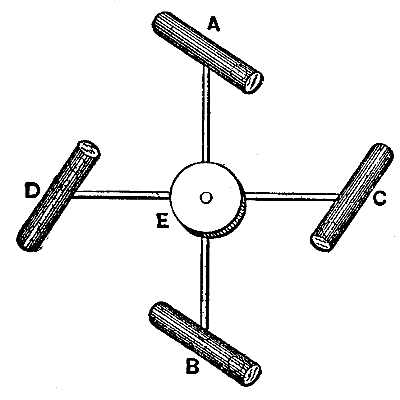Revolving
tubes and balls
The balls, A
and B, are in equilibrium because they are at an equal distance from
the vertical line that passes through the center E. By the construction
of the machine, the ball, D, being, on the contrary, more distant from
the point of support than the ball, C, must prevail over the latter and
break the equilibrium.

It must then
descend to the point, B, and cause the apparatus to make a
quarter revolution. Now, the latter can not take place without the rod,
A, B, which was situated vertically, assuming a horizontal position,
and then the balls, A and B, are to each other as were the balls D, C.
One must overcome the other and cause the apparatus to make another
quarter revolution. This second quarter revolution can not take place
without being followed by a third, through the new position assumed by
the balls A, B. Specious argument of the inventor.
(Subsection 927, from
p.370)
From: Gardner D. Hiscox, M.E., Mechanical Appliances and Novelties of Construction (1927), Norman W. Henley Publ. Co.






